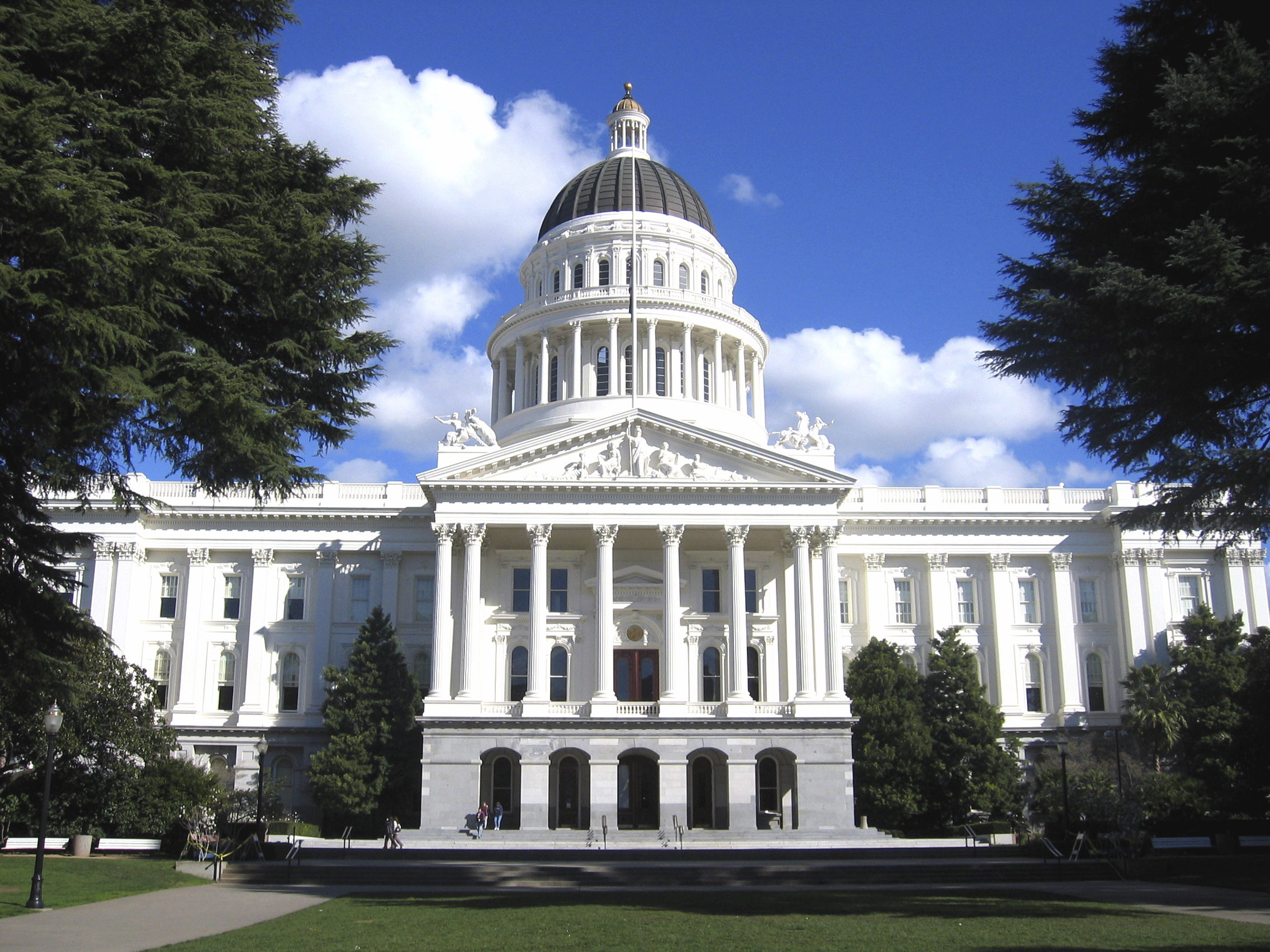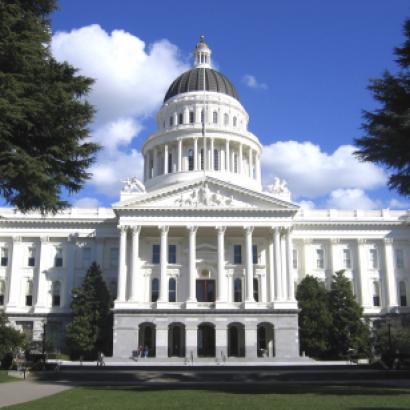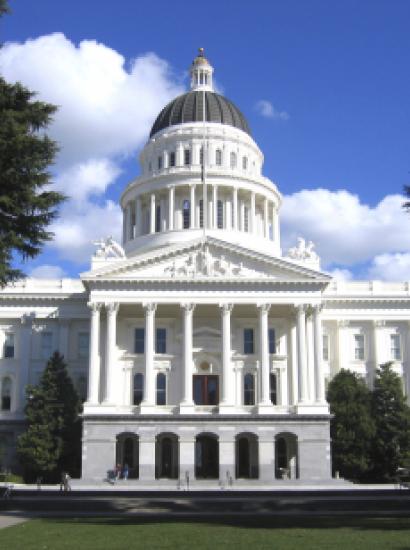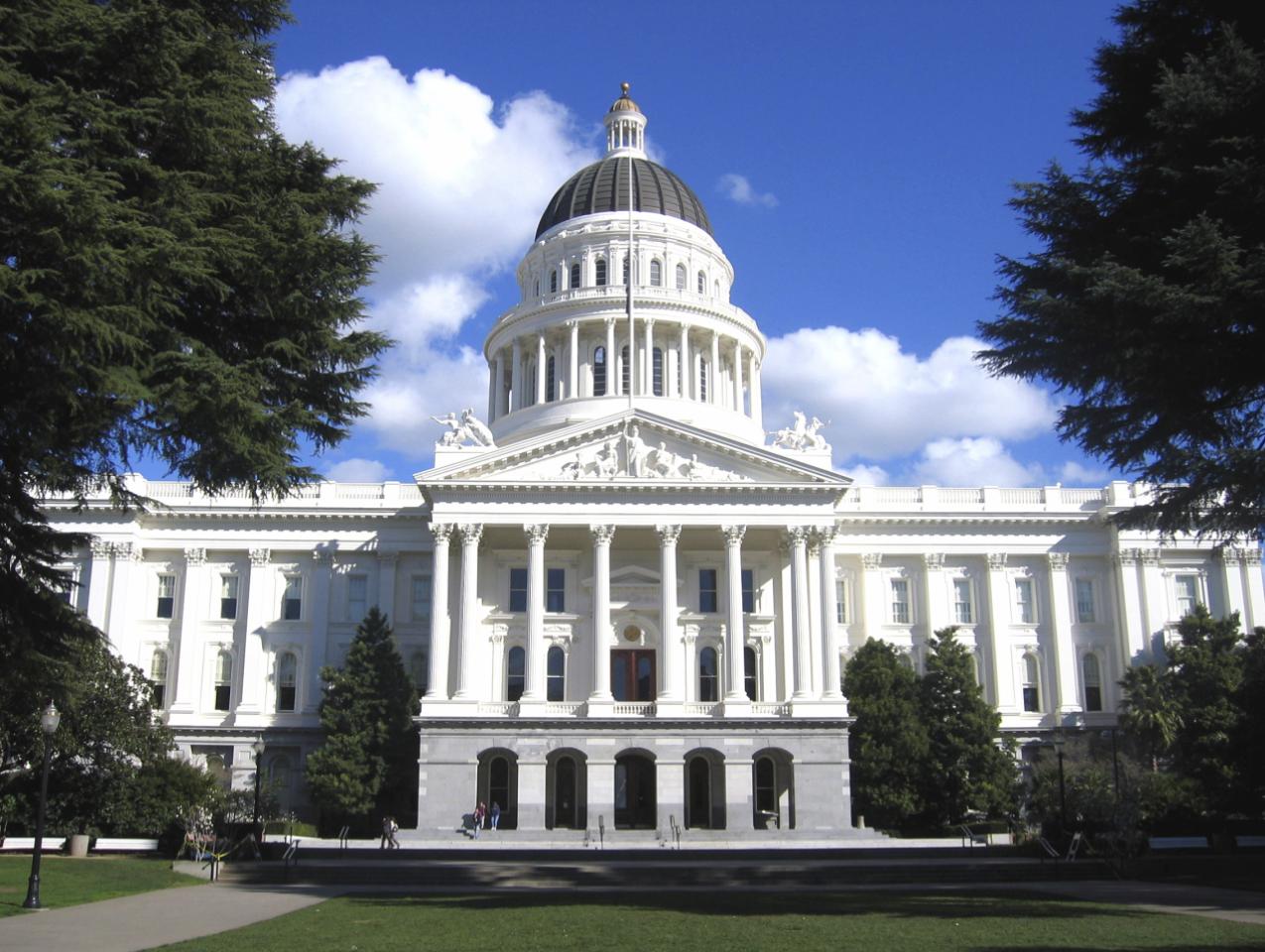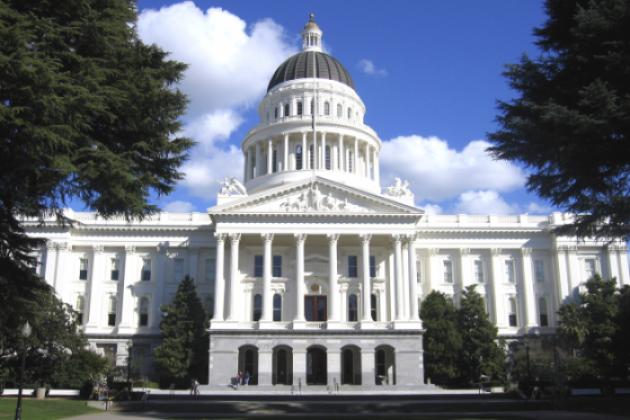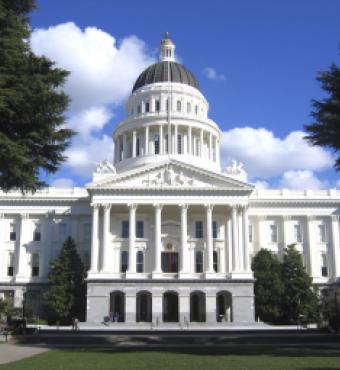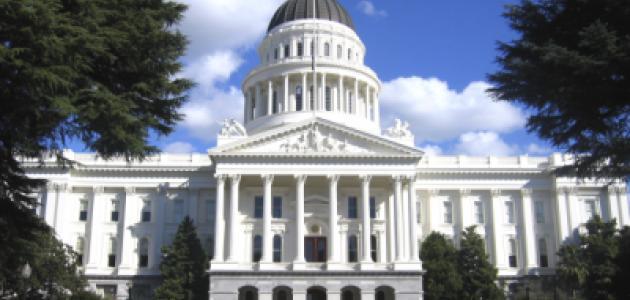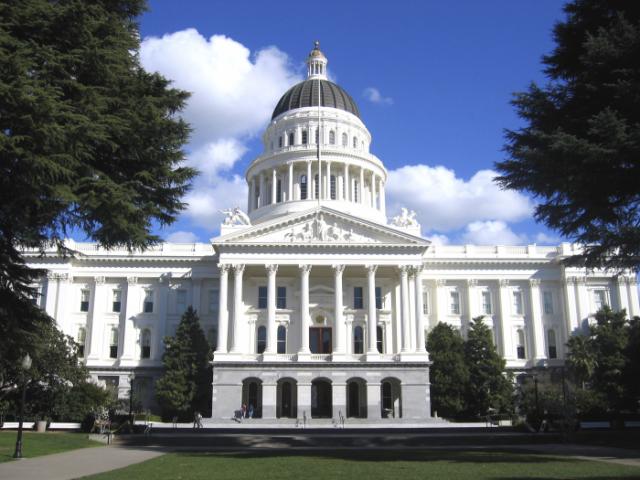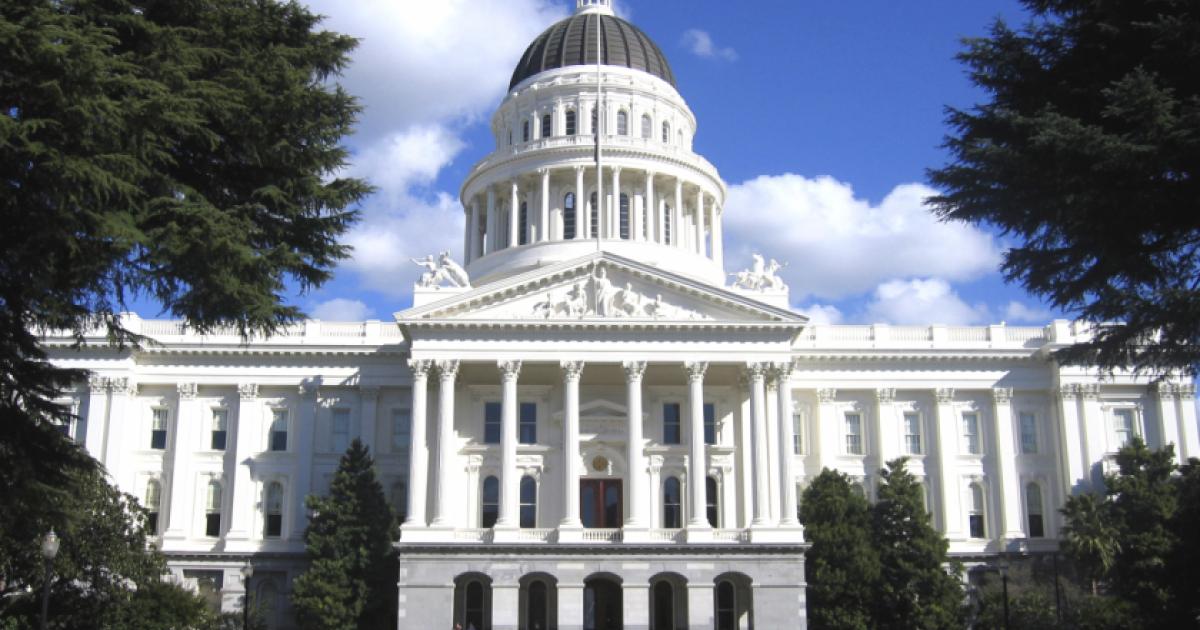And so it may turn out that California governor Gavin Newsom gets his wish granted—his name appearing on the Golden State’s November ballot.
Only, not in the way Newsom would seem to prefer, as a presidential candidate.
Instead, there’s a remote chance that Newsom could be the subject of a gubernatorial recall vote coinciding with the regularly scheduled general election.
If so, it would be the second time that a recall of Newsom has been put to a vote during his nearly five years in office. Back in September 2021, what started as an expression of public frustration with the governor’s handling of the COVID pandemic turned into a referendum on blue- and red-state political dynamics and a resounding win for the incumbent. (“We said yes to science,” Newsom boasted after the race was called. “We said yes to vaccines. We said yes to ending this pandemic. We said yes to people’s right to vote without fear of fake fraud or voter suppression. We said yes to women’s fundamental, constitutional right to decide for herself what she does with her body and her fate and future.”)
The bone of contention in 2024? Not the public’s heath, but rather California’s fiscal health—coupled with some absentee parenting.
According to Rescue California, which likewise was involved in the failed 2021 recall attempt, Newsom “has abandoned the state to advance his Presidential ambitions, leaving behind a $68 Billion budget deficit and a public safety, immigration and education crisis.”
The group alleges other offenses on its web site:
Granted 700,000 immigrants free health care at a cost to taxpayers of $3 billion annually, while cutting vital programs for veterans, school children, the disabled and the homeless.
Kept schools closed during Covid longer that other states allowing California students to fall further behind in basic skills such as language and mathematics.
Closed prisons and ordered the release of thousands of dangerous criminals onto our streets.
Weakened our public safety laws, creating an epidemic of smash and grab crimes and violent assaults.
Forced Californians to suffer under the highest taxes in the nation and the highest home prices outside Hawaii, while he undermines Prop. 13.
Spends billions on government homeless programs that have repeatedly failed.
Not that California’s governor seems all that worried. “Trump Republicans are launching another wasteful recall campaign to distract us from the existential fight for democracy and reproductive freedom,” Newsom posted on social media not long after Rescue California announced its intentions.
So what are the chances of a second Newsom recall vote coming to fruition? I’d place it somewhere between a Trump return to the White House (the former president currently a betting favorite) versus Trump investing in vanishing San Francisco commercial space (not likely, given his personal finances are, shall we say, complicated these days).
Before we get too far over our skis in a California slammed by snow last weekend, there are multiple reasons to be skeptical about a gubernatorial recall in 2024.
Let’s begin with recent history. If Recall California’s latest effort moves forward, it will be the seventh anti-Newsom recall attempted. In September 2021, 61.9% of Californians voting “no” on the recall question was in line with the 61.9% support Newsom received in his first gubernatorial victory in 2018 and the 59.2% support he received in his 2022 re-election effort.
Let’s put that in real numbers. In that last recall vote, Newsom received 7.944 million votes—some three million more votes than the sum of Californians who wanted him removed. Can a 2024 recall manage to shift 1.5 million votes against a Democratic governor, especially in a deep-blue state and a Democratic base looking to punish Donald Trump in his third bid in a November election?
A second reason for skepticism: the sands of time. In order to stage a recall vote concurrent with the general election, Recall California would have until May to collect about 1.31 million valid signatures from registered California voters to qualify for the ballot (state law requires the equivalent of at least 12% of all votes in the previous gubernatorial election). But that’s assuming every signature gathered holds up to scrutiny once double-checked by California’s secretary of state. Assuming 1.6 million signatures is a better guarantor for getting the recall on the ballot, that means anti-Newsom forces need to collect close to 27,000 signatures a day over a two-month period—a tall order unless a wealthy patron emerges to underwrite the signature gathering.
Third, there’s the public’s mood.
A Public Policy Institute of California survey from last month shows less than half of adults (47%) and likely voters (48%) approving of Newsom’s job performance—the first time since 2019 that Newsom’s positives fell below 50%. That jibes with a Berkeley IGS Poll from last November showing Newsom with lower approval (44%) than disapproval (49%). Those numbers reflect a California electorate not pleased with the Golden State’s status quo. (In the PPIC poll, majorities of California adults (57%) and likely voters (55%) believe the state is headed in the wrong direction.)
However, those same voters aren’t in a nihilistic mood—PPIC reports 56% of Californians believing Newsom and the state legislature can have a productive year—which makes the recall a tougher sell. That’s in contrast to the 2003 election to recall Gray Davis, when California voters had fresh memories of a governor and a legislature that couldn’t deliver a budget on time.
Fourth, and finally, there’s a financial consideration. Over the course of the 2021 recall, Newsom amassed a $70 million war chest—about 15 times what his opposition managed to scrape together. Here, the recall rules work in favor of a targeted governor, as California doesn’t place a limit on contributions to recall committees. Translation: the recall is an invitation for friends in high places to get on the governor’s good side (One of those chickens is coming home to roost as Newsom now faces criticism for Panera Bread’s exemption from a 2022 state minimum-wage law—Panera’s billionaire CEO, a friend of Newsom’s, having donated $100,000 to Newsom’s recall committee the year before).
All of that said, talk of a recall does raise a salient point: is Newsom suitably focused on his day job, or is he too distracted by national politics (the day before recall speculation emerged, Newsom appearing on NBC’s Meet the Press to announce an advertising campaign criticizing red states for their anti-abortion policies and sanctions)?
That concern begins with Newsom’s handling of California’s fiscal affairs, including a projected state budget deficit of $73 billion, according to the California Legislative Analyst’s Office most recent look, which is $5 billion more than January’s estimate and $35 billion more in red ink than what the governor and his bean-counters claim. (“Mr. Newsom has ambitions to reside in Washington, D.C.,” the Wall Street Journal dryly observed, “and based on his deficits it looks like he’d fit right in.”)
There are at least two ways that a California governor can attempt to set the tone on what might be an uncomfortable spending debate between now and the July 1 deadline for the state’s new budget.
One option: waiting another 10 or more weeks for the annual “May Revision” announcement, the governor’s January budget blueprint adjusted for 2024 tax revenue received.
Or the governor can act sooner by offering a forceful State of the State Address outlining his fiscal principles—i.e., where he stands on tax increases, spending cuts, and budget gimmicks.
The problem with that second approach: Newsom has yet to indicate when (or if) he’ll deliver such an oration this year.
Last year, Newsom didn’t deliver the annual address, which was a break from tradition (re-elected governors rarely have passed on the opportunity) but was well within his rights as California’s chief executive (the state constitution requires the governor to report to the legislature “each calendar year on the condition of the State” but doesn’t stipulate by what means). Instead, Newsom opted for a multiday media tour of the Golden State, plus this letter forwarded to the legislature on the fourth Wednesday in March.
The governor’s defenders might argue that the California version of what President Biden is doing tonight is archaic, if not outdated. The speech, usually delivered in the morning and oftentimes not shown live in non-Sacramento markets, doesn’t generate the same drama as a presidential State of the Union speech. Moreover, an Information Age governor can use social media just as effectively as a teleprompter to share his or her thoughts (especially a governor who struggles with dyslexia).
What Newsom’s detractors can reasonably ask: why does California have to wait for its governor to step forward weeks and months after other ambitious governors have used the same speech vehicle to showcase their national ambitions? These include potential Newsom rivals. In Colorado, governor Jared Polis delivered his State of the State address 11 days into the new year—Polis’s approach alien to that of California Democrats in that he repeated a call for a lower state income tax. Less than two weeks after that, Michigan governor Gretchen Whitmer delivered an address notable for two things: its embrace of California-style ideas (free community college, free pre-K for all, rebates for EV purchases) and plenty of sophomoric references to 1980s songs (Whitmer, a Gen Xer born in 1971, channeling the likes of Cyndi Lauper, Tom Petty, Tina Turner, and Michigan icon Bob Seger).
After 2024, Newsom has two more years to decide how to handle his State of the State Addresses. He can easily fall back on tradition, if he so chooses—prior to Newsom, each and every California governor in the Information Age delivered their addresses in January (my former boss, Pete Wilson, delivered each of his eight addresses no later than January 9 both to set the tone in the State Capitol and to get the jump on a slew of Republican governors all preaching the same gospel of lower taxes, welfare reform, and tougher crimes laws).
Or if Newsom wants to be innovative, he can continue to search for venues beyond California’s capital city (you might recall his “remote” 2021 State of the State Address, delivered on March 9 of that year in vacant Dodger Stadium, which had been converted to a vaccination site).
Either way, Newsom’s future speech choices can be seen as a reflection of just how seriously he takes his Sacramento job as opposed to what political opportunities may lie ahead in Washington.
Stating the obvious: California deserves a trenchant speech focused on the state of the Golden State, delivered by a governor who could benefit from a renewed focus on intrastate concerns.







